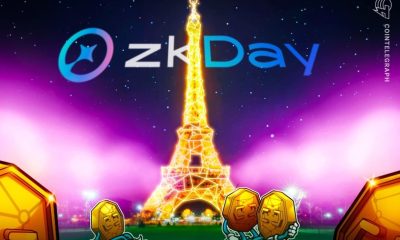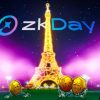ICO
Microsoft and Ethereum Foundation Swell the Hyperledger Ranks Amid Growing Cross-Industry Blockchain Collaboration

Hyperledger now has more than 270 members, with Microsoft and the Ethereum Foundation becoming the newest
United States tech giant Microsoft and the Ethereum Foundation are among the latest companies to join the ranks of the Hyperledger greenhouse hosted by the Linux Foundation. Many notable names in the tech and wider business fields today are developing enterprise-grade solutions based on the expanding set of tools built on Hyperledger.
These institutional blockchain projects cut across both financial and nonfinancial distributed ledger technology (DLT) utilization. Presently, there are pilot projects geared toward identification systems, supply chain management (SCM) and provenance, to mention a few.
On the whole, members of Hyperledger appear to be at the forefront of a renaissance in open-source project development, facilitating a more decentralized approach to project building. Such a trend evinces a return to a more decentralized internet with blockchain technology living up to the hype of being a disruptor of the global business process.
There are, however, some drawbacks to the emerging open-source project building trend, especially for startups that have yet to earn significant pedigree within the industry. Also, while DLT constitutes a technological breakthrough, kinks such as scaling need to be worked out before DLT-based systems can realistically upstage their mainstream centralized counterparts.
New members join Hyperledger
Microsoft, Salesforce and the Ethereum Foundation are among eight new members of Hyperledger, as announced on June 18. These companies already have a history of blockchain adoption, with several DLT-based projects across diverse business processes.
There are now more than 270 members of Hyperledger developing their own enterprise-grade blockchain solutions. Commenting on the collaboration with Hyperledger, Marley Gray, Microsoft’s principal blockchain engineering architect, declared:
“Our journey in the blockchain ecosystem has brought us a long way, and now is the time for us to join the Hyperledger community. We are proud of our contributions to such a diverse blockchain ecosystem, from our Azure service offerings and developer toolkits to our leadership in driving open specifications.”
Microsoft is by no means a new entrant to the blockchain arena, with the company already developing an ecosystem for blockchain as a service (BaaS) on the Azure cloud computing service.
In the BaaS arena, Azure competes with other offerings by the likes of Oracle and AWS. These platforms allow businesses to create bespoke DLT-frameworks to fit their operating purposes without having to navigate the skill, knowledge and cost barriers associated with building decentralized apps (DApps) from scratch.
Teams working on the Azure BaaS infrastructure get access to preconfigured modular networks that simplify the process from conception to deployment of their DLT-based solutions. By joining Hyperledger, Microsoft Azure now offers three different enterprise blockchain development environments, with the other two being Corda and Ethereum.
The Ethereum Foundation joins the Ethereum Enterprise Alliance (EEA) as a partner of Hyperledger. For Hyperledger CEO Brian Behlendorf, the decision of the Ethereum Foundation to join the expanding Hyperledger enterprise blockchain greenhouse will be a positive one for blockchain developers in the industry.
Data from StateOfTheDApps — a platform that tracks decentralized apps — shows that Ethereum hosts the highest number of DApps. Of the total 2,667 DApps tracked by the platform, 2,505 run on the Ethereum blockchain.
Apart from the newly announced members, others include notable tech giants like IBM and Oracle. IBM, Walmart and Alibaba are among the companies with a significantly high number of blockchain-based patents, which is indicative of their activity in research and development (R&D) efforts in DLT-related enterprises.
Hyperledger projects supporting enterprise blockchain development
Hyperledger, for its part, is a collaboration between enterprises and the open-source community facilitated by the Linux Foundation. The Hyperledger greenhouse acts as a bridge that connects developers, nonprofit organizations, academia and all other stakeholders interested in developing and implementing enterprise-grade blockchain technology solutions.
Cointelegraph spoke with Marta Piekarska, director of the Hyperledger ecosystem at the Linux Foundation, about how the partnership works. According to Piekarska, Hyperledger doesn’t develop code or provide consulting services. Explaining further, Piekarska said:
“We support them in terms of PR and marketing for their projects. Not all of the developers creating solutions using Hyperledger tools are members of Hyperledger. You don’t have to be a Hyperledger member to use our technology, participate in our special interest groups, or to download and use the code. There is no technological barrier to using Hyperledger frameworks and tools.”
There are numerous projects around the world based on specific Hyperledger frameworks, such as Hyperledger Fabric and Hyperledger Iroha, to mention a few. Back in May 2019, Cointelegraph reported on the partnership between Iran’s central bank and Tehran-based blockchain firm Areatak to create a DLT platform for the country’s banking and finance markets using Hyperledger Fabric. According to the report, the Borna blockchain platform, when fully realized, should help revamp Iran’s outdated banking sector.
Matt Milligan of Milligan Partners — a blockchain-based startup focusing on toll interoperability and one of the newest members of Hyperledger — highlighted the benefits of joining a vast collaborative effort like Hyperledger. Milligan, the managing partner at the company, said:
“Joining Hyperledger is tremendously valuable to us as we develop blockchain solutions for Mobility as a Service. By working in this diverse open source community, we can be more creative and more innovative than we could ever be on our own.”
The fact that Hyperledger is open-source, means developers can learn from one another, trading ideas in an environment increasingly being populated by teams working on cutting-edge DLT protocols. This collaboration serves to achieve Hyperledger’s aim of fostering cross-industry blockchain development.
By so doing, stakeholders at Hyperledger are hoping that blockchain technology can move away from the realm of being a marketing buzzword to more tangible utility cases. In an interview during the Brainstorm 2019 conference organized by Fortune, Ripple CEO Brad Garlinghouse drew attention to the existence of too many economically inviable projects with the term “blockchain” slapped on them. According to Garlinghouse, “There is a lot of noise in the blockchain industry.”
Focus on nonfinancial DLT utilization
Apart from financial products, many of the blockchain protocols being built using Hyperledger tools involve nonfinancial use cases. This trend reinforces the narrative that DLT is a disruptive technology capable of affecting several facets of the global business process.
From a nonfinancial perspective, blockchain technology seems to be getting a great deal of adoption in protocols that require trust networks and provenance. Together, these two broad application cases cover much of the mainstream business arena — from SCM to health care and identity management.
Cointelegraph asked Piekarska about the major nonfinancial enterprise blockchain solutions being developed using the different Hyperledger framework tools, to which the director responded:
“There are quite a few markets that we are seeing as very big and potential markets. We are currently seeing a lot of interest in blockchain technology from stakeholders in supply chain management. We have the food trust project for IBM and Maersk. We have Everledger which is a blockchain project based on Hyperledger Fabric to track the provenance of diamonds and now also wine. There are at least 200 live networks based on Hyperledger Fabric alone. Digital identity is another space where we see a lot of interest. This is mostly as a result of Hyperledger Indy which is our framework for building digital identity solutions using zero-knowledge proofs. One of the main contributors here is Sovereign Foundation. They have the largest running network that is based on Hyperledger Indy.”
Right here for the taking
The combination of immutable data record-keeping and the ability to create trustless networks that do not require expensive third-party authenticators continues to be a pivotal aspect of the blockchain appeal. However, these projects still need to scale for them to be able to provide robust functionality on enterprise-level protocols.
Blockchain technology also seems to be having a material impact on open-source project development for both notable tech firms and smaller startups. According to Piekarska, there has been a noticeable increase in the number of projects listed on GitHub since the emergence of blockchain technology.
It isn’t inconceivable to imagine that DLT is creating easier avenues for open-source collaboration among development teams across the globe. Piekarska said:
“I think the coming of blockchain has caused a renaissance in open source project development especially for enterprise-grade software. It is changing the way enterprises see open-source project development which is reflected in the influx of notable tech giants like IBM and Microsoft into the Hyperledger environment. All projects in Hyperledger are under Apache license. It also lowers the barriers for small companies that can now take the code and build useful protocols.”

















